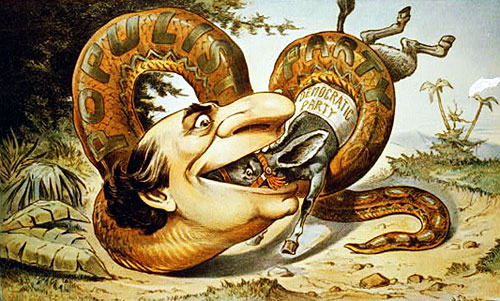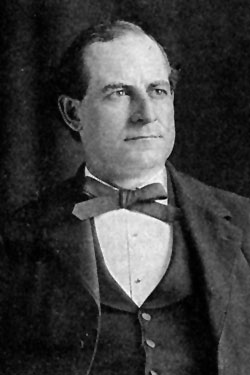The Populist Party
The deflated dollar of the late 1800s and the federal government’s support of legislative policies that seemed to be pro-industrialist and anti-farmer sparked the creation of a new national party known as the Populist Party. Populists wanted more money circulated in the economy by tying the cost of a dollar to the cost of silver instead of gold. They wanted a progressive income tax placed on everyone so that more taxes were paid by those who made more money.
 |
| Populist cartoon |
The Populist Party grew out of the political organization of farmers as they watched the price of their crops fall. In an effort to become widespread, Populists reached out to African-American farmers. They also added the eight-hour workday to their platform of issues in order to attract laborers to the party. Like the Democratic Party, Populists were called Liberals as opposed to the conservative Republicans.
 |
| William Jennings Bryan |
Populists ran James B. Weaver for president in the election of 1892 but lost to Democrat Grover Cleveland, who returned to the White House for a second non-concurrent term. The Populists did gain positions in state and local governments by electing governors, senators, and congressional representatives. The party joined with the Democrats to run William Jennings Bryan for president in 1896. Bryan, an accomplished orator and former Congressman, ran against Republican William McKinley and lost. As mining innovations in the Yukon increased the gold supply, the Republican support of the gold standard for money circulation became less of a problem with the Populists because the dollar began to inflate and crop prices began to rise due in part to tariff increases.